Alternative names 1998 SF36 Perihelion 0.953 AU (142.568 Gm) Absolute magnitude 19.2 Orbits Sun | Discovery date 26 September 1998 Aphelion 1.695 AU (253.520 Gm) Discovered 26 September 1998 | |
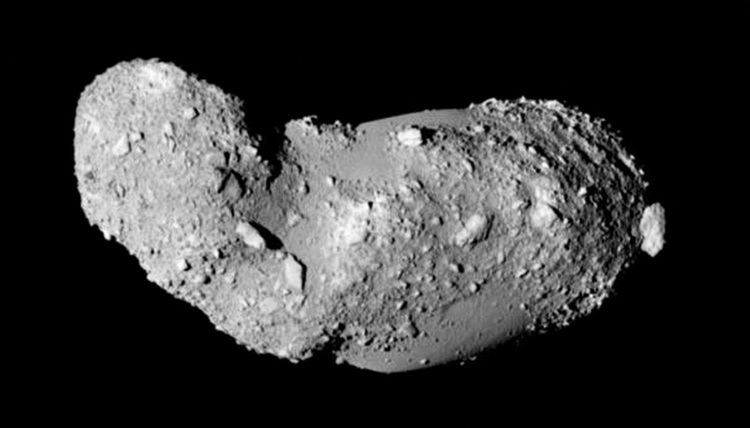 | ||
Minor planet category Apollo asteroid,Mars-crosser asteroid Similar Solar System, 433 Eros, 162173 Ryugu, Sun, 101955 Bennu | ||
25143 Itokawa (/ˌiːtoʊˈkɑːwə/; Japanese: イトカワ [itokawa]) is an Apollo and Mars-crosser asteroid. It was the first asteroid to be the target of a sample return mission, the Japanese space probe Hayabusa, and the smallest asteroid photographed by a spacecraft.
Contents
- 25143 itokawa orbit trajectory
- Discovery and naming
- Description
- Exploration
- Surface features
- Regiones
- Analysis of particles reported in August 2011
- References
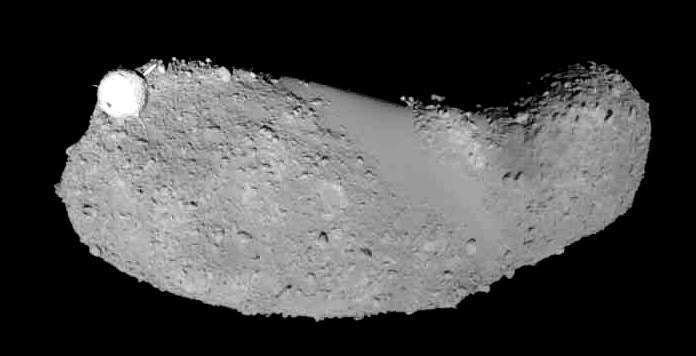
25143 itokawa orbit trajectory
Discovery and naming
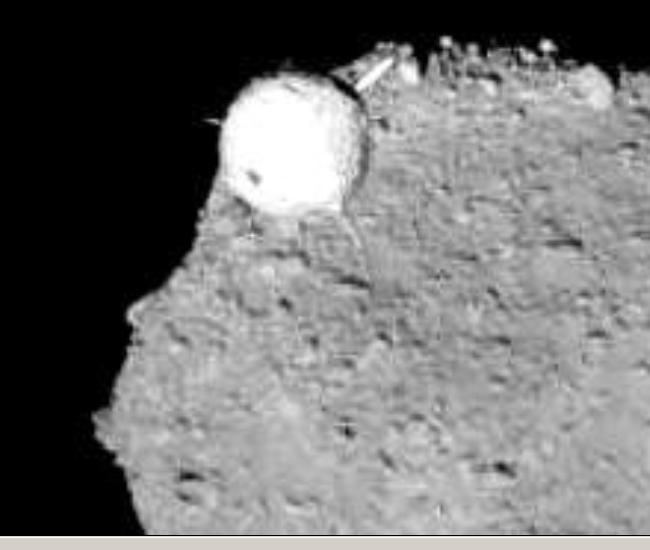
The asteroid was discovered in 1998 by the LINEAR project and was given the provisional designation 1998 SF36. In August 2003, it was officially named after Hideo Itokawa, a Japanese rocket scientist.
Description
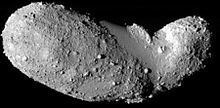
Itokawa is an S-type asteroid. Radar imaging by Goldstone in 2001 observed an ellipsoid 630 ± 60 m long and 250 ± 30 m wide.
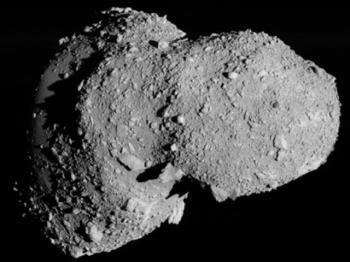
The Hayabusa mission confirmed these findings and also suggested that Itokawa may be a contact binary formed by two or more smaller asteroids that have gravitated toward each other and stuck together. The Hayabusa images show a surprising lack of impact craters and a very rough surface studded with boulders, described by the mission team as a 'rubble pile'. Furthermore, the density of the asteroid is too low for it to be made from solid rock. This would mean that Itokawa is not a monolith but rather a 'rubble pile' formed from fragments that have cohered over time. Based on Yarkovsky–O'Keefe–Radzievskii–Paddack effect measurements, a small section of Itokawa is estimated to have a density of 2.9 g/cm³, whereas a larger section is estimated to have a density of 1.8 g/cm³.
Exploration
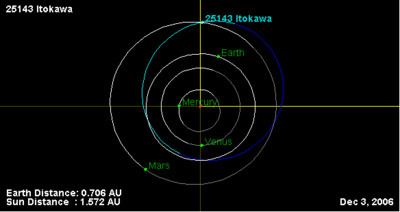
In 2000, it was selected as the target of Japan's Hayabusa mission. The probe arrived in the vicinity of Itokawa on 12 September 2005 and initially "parked" in an asteroid–Sun line at 20 km (12 mi), and later 7 km (4.3 mi), from the asteroid (Itokawa's gravity was too weak to provide an orbit, so the spacecraft adjusted its orbit around the Sun until it matched the asteroid's). Hayabusa landed on 20 November for thirty minutes, but it failed to operate a device designed to collect soil samples. On 25 November, a second landing and sampling sequence was attempted. The sample capsule was returned to Earth and landed at Woomera, South Australia on 13 June 2010, around 13:51 UTC (23:21 local). On 16 November 2010, the Japan Aerospace Exploration Agency reported that dust collected during Hayabusa's voyage was indeed from the asteroid.
Surface features
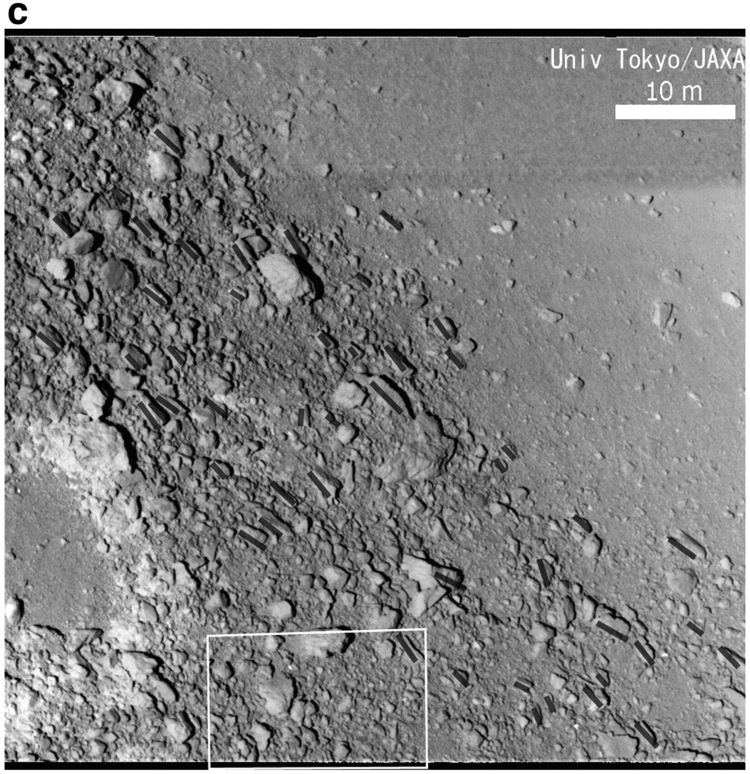
Names of major surface features were proposed by Hayabusa scientists and accepted by the Working Group for Planetary System Nomenclature of the International Astronomical Union. Also, the Hayabusa science team is using working names for smaller surface features. The following tables list the names of geological features on the asteroid. No naming conventions have been disclosed for surface features on Itokawa.
Regiones
Regiones (geologically distinct areas) on Itokawa.
Analysis of particles reported in August 2011
The 26 August 2011, issue of Science devoted six articles to findings based on dust that Hayabusa had collected from Itokawa. Scientists' analysis suggested that Itokawa was probably made up from interior fragments of a larger asteroid that broke apart. Dust collected from the asteroid surface is thought to have been exposed there for about eight million years.
Scientists used varied techniques of chemistry and mineralogy to analyze the dust from Itokawa. Itokawa's composition was found to match the common type of meteorites known as "low-total-iron, low metal ordinary chondrites". Another team of scientists determined that the dark iron color on the surface of Itokawa was the result of abrasion by micrometeoroids and high-speed particles from the Sun which had converted the normally whitish iron oxide coloring.
